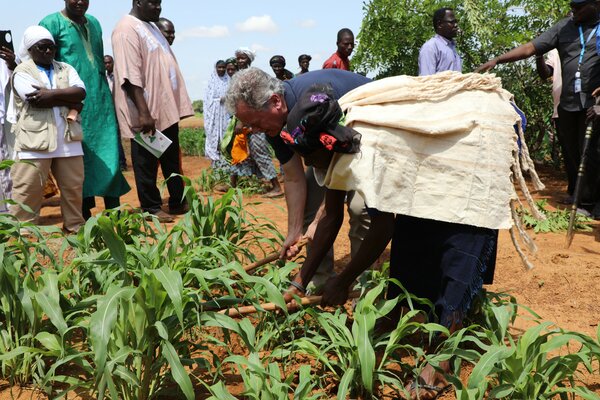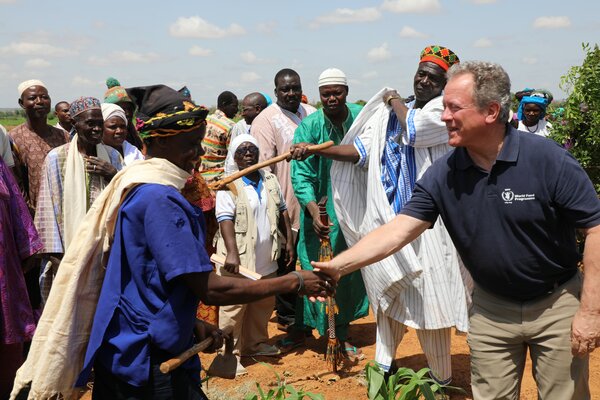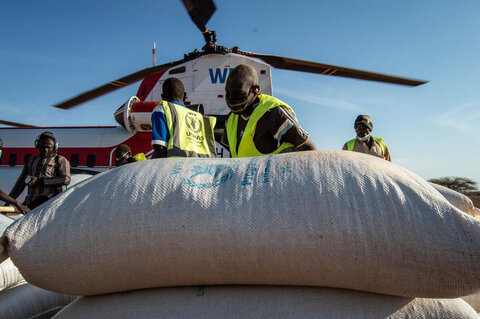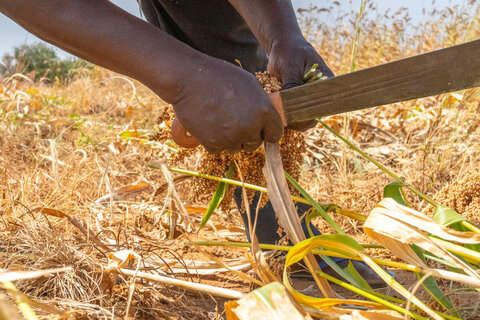Burkina Faso’s balancing act

"When we arrived, we did not know where to sleep, which is why the village chief allowed us to stay," says Tasseré Sawadogo. Before they were forced to leave, Tasseré and his family lived a quiet life in the village of Dablo, in Burkina Faso's northwest region.
Violence is escalating in this part of the Sahel — a vast, semi-arid region which spans western and north-central Africa, from Senegal eastward to Sudan. The security crisis in Burkina Faso is so severe it risks undoing much of the good work that the World Food Programme (WFP) has achieved in the past year.
On 9 September, WFP activated its highest level of emergency response in the central Sahel, covering Burkina Faso, Mali and Niger. Spiralling conflict combined with the lean-season drought, which kicked off in June, left more than 5.1 million people across the three countries requiring urgent assistance — 1.3 million of these were in Burkina Faso.


Attacks, killings and kidnappings have become commonplace in the country. More than 280,000 people have fled their homes. Access for humanitarian personnel is restricted in the north and eastern provinces, and in areas bordering Mali.
WFP is working with partners on projects tailored to needs as they evolve on the ground. It is enabling assistance, deploying full-time emergency operations expertise, reinforcing existing local offices and establishing presence in other locations across the country.

"We are currently reaching about 120,000 displaced people," says David Bulman, WFP Country Director in Burkina Faso. "And we are increasing our capacity to reach at least 210,000 before the end of the year — but the number keeps going up and up."
WFP faces the challenge of meeting growing humanitarian needs while protecting the results obtained in resilience — investment activities focusing on women and young people to shore up livelihoods, restore ecosystems, create jobs, build social cohesion and support the authorities in achieving sustainable development.
Safeguarding resilience gains while addressing growing humanitarian needs requires WFP teams to provide creative solutions. In Bissighin, for example, communities working with WFP have successfully integrated internally displaced people like Tasseré and his family.

Together with 21 other displaced families, they were allocated a portion of land being rehabilitated as part of WFP's Food for Asset Creation initiative in Bissighin, about 15 km southwest of Kaya, capital of Burkina Faso's Centre-North region. They have been growing their own maize, cowpeas and vegetables.
"We have already sown," says Tasseré. "Now we hope that the crops will bear fruit. It would improve our living conditions."
On a hot day in August, during a visit to Bissighin, WFP Executive Director David Beasley witnessed women and men hard at work tilling, sowing and weeding on a vast community site. There were smiles when maize and cowpea were spotted sprouting from the earth.
"The land used to be very hard, we could not use it," Rasmata Sawadogo told him. "Now I am able to grow crops … we are very happy," she added, while weeding millet grown in one of the half-moon shapes dug into the dry soil.
Rasmata and her family are among more than 1,000 community members working with WFP, its partners and government on restoring about 85 hectares of degraded land using techniques such as the so-called half-moons.
In places where rainfall is erratic, the half-moons retain water. During what should be the wet season, they marshal what little rainfall there is to soak in, allowing seeds to germinate.
This is part of WFP's Food Assistance for Assets Creation approach — providing families with food or cash while they undertake activities to rehabilitate the land for improved yield. Last year in Burkina Faso, 1,424 hectares of degraded land were rehabilitated, and ten artificial ponds, with a capacity of 3,000 cubic metres each, were built to support communities.
WFP is expanding its resilience operations to invest in building community assets, promote education, improve nutrition and health, and create jobs for young people. It aims to support 2 million people in 800 communities across 5 Sahel countries — Burkina Faso, Chad, Mali, Mauritania and Niger — until 2023.
In the words of WFP's Executive Director David Beasley: "What we want is to create success, sustainability and resilience. In a few more years, WFP won't need to be here because people would be taking care of themselves and they would be stronger for it."
With the violence continuing, however, what success, sustainability and resilience has been achieved through WFP's investment is at risk of being undone.


